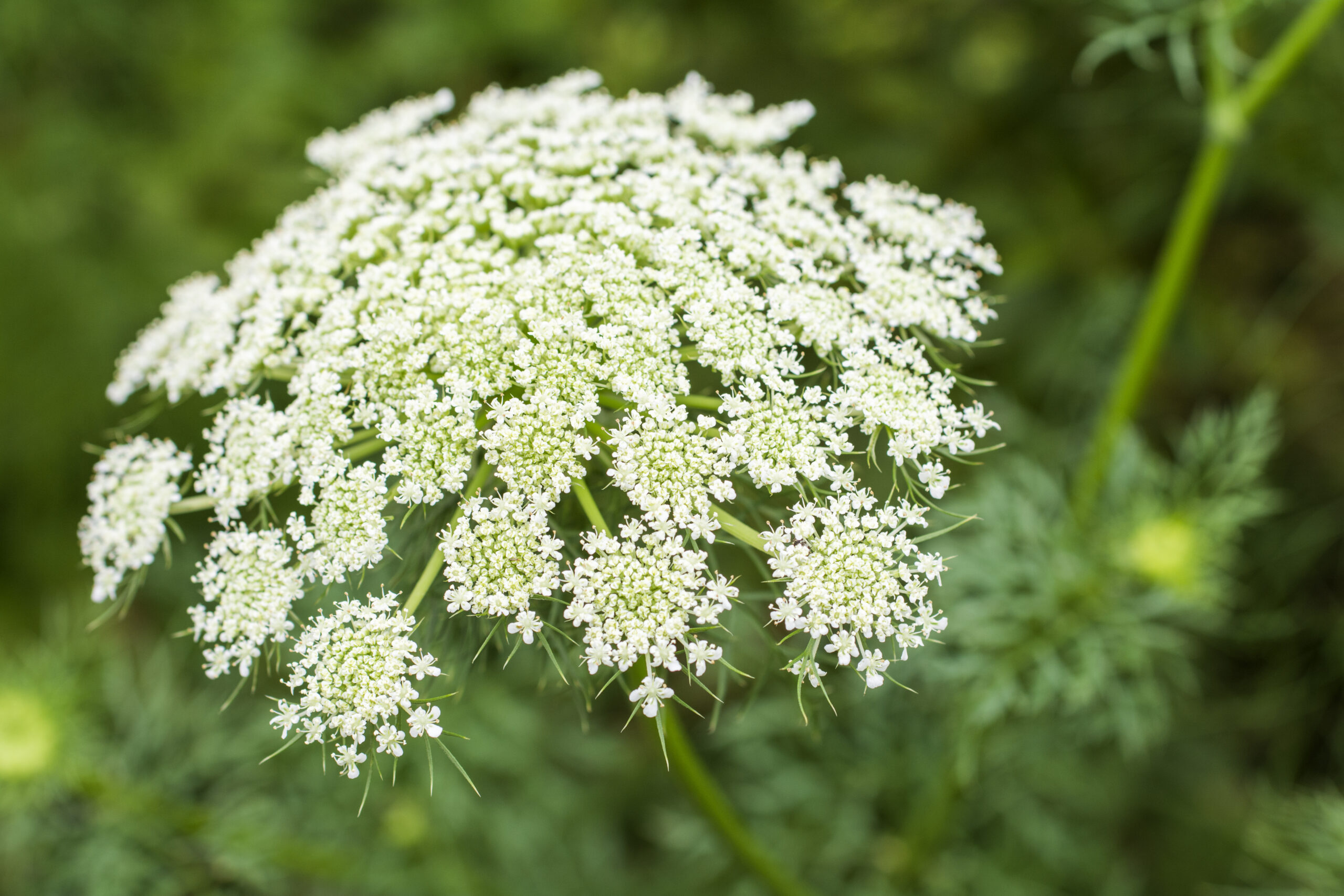You may be surprised to know that carrots grow flowers. Carrots grow spherical or flat-topped ivory colored flowers. They also produce seeds so you can replenish your garden. But, are Carrot flowers edible?
Yes, you can consume Carrot flowers raw, sautéed, or fried. They are yummy in salads. You can also spread a little butter on carrot flowers and deep fry them. Cooked carrot flowers provide you with a little carrot flavor. The greens and seeds are also edible.
Are Carrot Flowers Edible?
You can eat Carrot Flowers. However, some Carrot flowers – especially wild Carrot flowers (but not Queen Anne’s lace) – are toxic.
If you want to eat Carrot flowers, you need to learn how to distinguish between Queen Anne Lace, other safe Carrot flowers, and the wild toxic ones.
(Also please don’t mistake Carrot flowers for Elderberry Flowers – which are lovely and almost aniseed in flavour. They have many uses but bring their own set of warnings.)
Carrot flowers come with hairy stalks and stems. Wild carrot flowers come with smooth stalks with purple spots.
You can get seeds from carrot flowers and use the seeds to grow new carrots. You can also use carrot seeds to flavor soups, stews, or teas.
How do Carrot Flowers Look?
Carrot flowers are typically white and lacy. The purple-coloured carrots grow purple flowers. Carrot flowers are umbel-type flowers (a cluster of several stalks, looking similar to umbrella ribs).
Carrot flowers start as a single stalk. They then grow into a bunch of small stalks. The ends of these smaller stalks produce little white flowers.
Seeds and flowers appear when you do not harvest your carrots and leave them through winter. Your carrots may seem dead in early spring.
However, its leaves will be back to life within a few weeks. The plant will then produce flowers and seeds.
You may not have noticed that your carrots could grow flowers because you typically harvest them as soon as they mature.
Carrot flowers are visually appealing. You can leave them to be and admire their beauty as they are. Isn’t it amazing to get flowers from a vegetable?
Carrot flowers are somewhat like a reward you get for forgetting to harvest your carrots in early spring.
Why do Carrots Flower?
The most common reason carrots flower is because they were not harvested at the end of the first growing season. This means the carrots were left on the ground over winter and early spring.
Carrots are easy to grow in your garden, either in the ground, in containers, or raised beds. All your carrot plant needs to grow successfully is loose garden soil and appropriate thinning while at the seedling stage.
Depending on the variety of your carrot, you should be able to harvest your carrots about 60 – 80 days after you sowed the seeds. At this time, the tops of the carrot roots are about 3/4 – 1 inch in diameter.
When they are ready for harvest, carrots will start popping out of the soil. They will also have a vibrant orange color.
When harvesting, loosen the soil around the carrot and pull it up from the greens. This will prevent the greens from breaking off from the roots of the carrots.
Carrots are biennial plants, thus, it takes two growing seasons before they reach maturity. Carrots are typically harvested at the end of the first growing season. It is at this time when the roots are thick, long, and sweet.
It is also at this point when the roots of your carrot plant are high in nutrients. If not harvested, the carrots will use these nutrients for the next growing season.
If you leave the carrots on the ground all through winter, they will grow again in spring. A bunch of flowers will appear, followed by seeds. Your carrot plant will then die in the fall.
Carrots Flower Because They Are Bolting.
Bolting, the production of flower stems before your carrots are harvested, to produce seeds.
Cold spells cause this through the seasons. Bolting occurs when your carrots are approaching maturity.
Annual crops naturally flower in the first year. Biennials, such as carrots, flower in the second year. Bolting occurs in annuals when they are ready to gather.
Bolting in biennials occurs when an over-wintering organ such as the roots of carrots grow flowers before winter.
Weather Conditions
Carrots and other biennial crops (leeks, beetroot, and onions) can grow flowers in their first year,
This happens when weather conditions are unsettled, usually after a long-lasting cold spell after the propagation period.
Hot days, cold nights, and late frosts may also cause your carrot plant to grow flowers prematurely.
The warm weather can confuse your carrot plant. Your plant will then tend divert its energy into flowering rather than root development. This will cause your plant to grow white flowers and inedible carrots.
To prevent your carrots from flowering, sow your carrot plants every few weeks during the growing season so they will do well even with fluctuations in weather.
Final Thoughts
Many growers are not aware that Carrot plants can grow flowers. The truth is, they grow magnificent flowers.
Are Carrot flowers edible? Yes, they are, and you can taste some carrot flavor when you consume Carrot flowers.
Most of our Tribe enjoy eating carrots – and in many different cooked and raw dishes.
However, we think it might take us a long time before we take a chance on trying to figure out the wild Carrot flowers and risk eating something toxic.
We’ll probably continue to grow and eat our carrots and just enjoy looking at the pretty flowers! But don’t let that stop you from ‘taking a walk on the wild side’!
Jenny Marie
Tribal Writer
Edited By
Patricia Godwin

